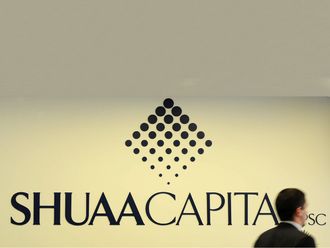New York: Donald Trump’s vows to ramp up infrastructure spending and ease banking regulations are giving a burst to the Dow Jones Industrial Average that’s sending it rocketing past the broader market.
The 120-year-old stalwart of the US equity market powered to a fresh record Monday as the S&P 500 Index hovered nine points below its own all-time high and traded near its biggest discount to the Dow since May 2014. The two indexes are the least correlated in almost six years as the blue-chip measure benefits from the burnished outlook for industrial companies and banks ushered in by Trump’s win, while losses in technology companies and utilities tug at the S&P 500.
Speculation the president-elect’s agenda will favour US manufacturers and big factory employers has lit a fire under the Dow, which counts industrial stocks like General Electric Co. and Boeing Co. as its biggest sector with a 20 per cent weighting. They’re less than 11 per cent of the S&P 500.
The Dow is set to outperform its broader counterpart on an annual basis for the first time since 2011, rallying 10 per cent this year, while the S&P 500 has climbed 7.9 per cent. The day before the election they were pretty much neck-and-neck, with the Dow up 4.8 per cent in 2016 and the S&P 500 headed for a yearly advance of 4.3 per cent.
The 7.9 per cent climb in US industrial stocks since Nov. 7 is second only to the 15 per cent surge racked up by financial shares, with banks buoyed by plummeting bond yields. In fact, the S&P 500’s industrial subindex rose to a level Dec. 1 that marked its biggest premium since 2011 over the wider benchmark.
Utilities have led losses in the S&P 500 since the election, slipping 5.2 per cent, while technology shares — thought to be disadvantaged when it comes to the president-elect’s trade and immigration policies — have fallen by 1.3 per cent. Tech has the biggest weighting in the S&P 500 at 21 per cent, followed by banks with 15 per cent and health-care and consumer-discretionary shares at 14 per cent and 12 per cent, respectively.












